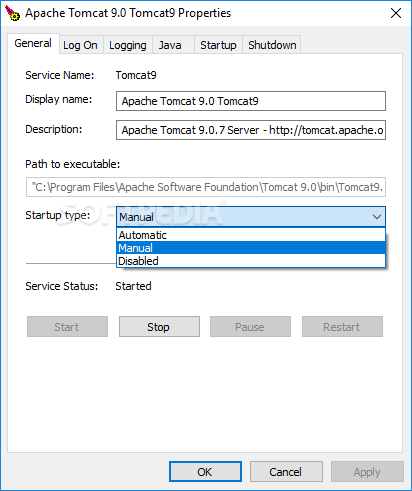

In addition, in our HelloResource.java file, our Path is set to /hello-world. If we go back to our application code, we can find the ApplicationPath in our HelloApplication.java - which is /api. In the next step, we will figure out how to reach our application’s endpoint that displays the Hello World message. (because it's a simple service with some REST APIs).

For example, we don't currently have an index.jsp file. We get this 404 page because Tomcat is running and listening for requests, but our application has no view to display. In the Run window ⌘4 (macOS), Alt+4 (Windows/Linux), you can check the logs to ensure that your Tomcat server is being deployed, however, IntelliJ IDEA automatically opens a browser when the URL of the application's root context - You should receive a 404 error: You will find it at the download section, a newer minor version than 8.0.30 will probably work fine but for a newer. Based on the documentation, Tomcat 7 requires JDK 1.6.0. We can run our application with ^R (macOS), or Shift+F10 (Windows/Linux) and this starts our Tomcat server. example on how to download and install Apache Tomcat 7 on a Windows 7 local system. You can open the Services window with ⌘8 (macOS), Alt+8 (Windows/Linux) to see the Tomcat server we just configured along with our web application. IntelliJ IDEA will now create our simple web application which will output “Hello, World!” when it receives a GET request. The Eclipse Jersey Server and Weld SE have been preselected for us because we selected REST service as the template in the previous step. Click Next to go to the next step in the tutorial and select Jakarta EE 9 from the Version drop-down.This is the name of your project by default. You can change this if required or leave it as the default com.example. For optimal security, the service should be run as a separate user, with reduced permissions (see. Using the checkbox on the component page sets the service as 'auto' startup, so that Tomcat is automatically started when Windows starts. This will also populate the Tomcat base directory. Installation as a service: Tomcat will be installed as a Windows service no matter what setting is selected. For the Tomcat Home, browse to the directory where you have Tomcat installed. We want to create a RESTful web application so leave the REST service template selected. Select this checkbox if you want to use Git to version control the files in this project. The name of your project, such as HelloWebApp. Select Java Enterprise on the left-hand menu and enter the following details: If you have an existing project open, click File > New.At the time of writing this article, the latest Tomcat version was version 10. Locate the Download section and click the latest Tomcat version available. Browse to the official Apache Tomcat website. From the Welcome Screen select New Project. To download the Tomcat installation file, follow the steps below: 1.Download the server as a zip file for Windows. We're going to create a small web application that runs on Tomcat to demonstrate the integration in IntelliJ IDEA Ultimate: Simply put, Apache Tomcat is a web server and servlet container that is used to deploy and serve Java web.


 0 kommentar(er)
0 kommentar(er)
